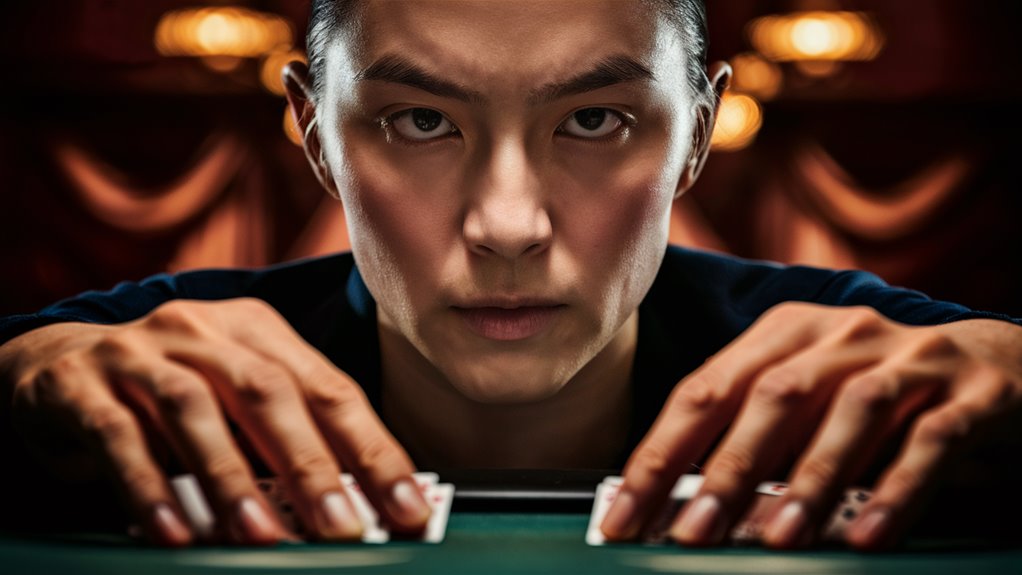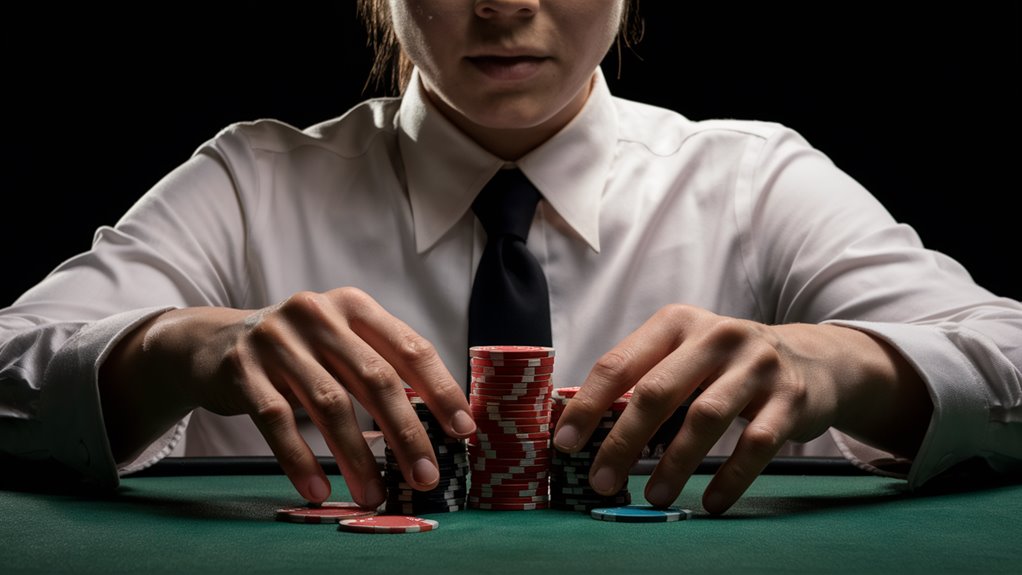Top Poker Bluff Tricks: A Smart Guide

How to Bluff Right in Poker
To bluff well in poker means using your head and good timing. You win by messing with minds and staying calm. Watch what others do mostly, and set up good bluffs.
The Best Tricks for Great Bluffs
Check card mixes and how you bet for the best bluff tricks. Body hints like their breath, looks, and betting tells you much. Your spot at the table is key too; spots near the end give better bluff chances.
- Slick moves from your seat
- Change your bet size
- Casino Management
- Use where you sit
- Tricking with smart timing
Set Up Your Bluff Game
Make a tight, smart image so your bluffs look real. Mix up how you play to hide your plans.
Mastering Tough Tricks
Add bluffs along the game, watch the pot odds and think about what hands they could mean. Try to guess possible hands to make your bets look real. When well done, these smart tricks help you bluff better, making your foes confused.
The Mental Game in Great Bluffs
Inside the Mind during Bluffs
Top poker bluffs rely on deep looks into how foes act and choose. Two big mental keys to good bluffs are: fear of losing and head games. Pros know when foes hang onto chips or play safe, as those people often fall for brave bets.
Playing with Mind Patterns
Using what they think they see helps you bluff right. Players try to find things to support their own thoughts. A solid early play lets you bluff more later, as foes think big bets mean strong hands. Worn-out minds matter too, in long games when clear thoughts sink and folks make bad moves.
Smart Timing and Watching Foes
Best bluff moments come with good timing and keen watching. Key points are at big tense parts, like end of games or large pots. Tiny face changes and action times tell you their feelings. Spotting worry or doubt ups your chance to bluff well. Great bluffing is all about crafting a real story that matches what foes think is true.
Top Poker Bluff Chances: A Smart Guide
Seeing Best Bluff Times
Looking at card mix tells when to try bluffing. When cards hint at strong hands or possible wins, sharp players make foes think they have the winning cards. Best bluffs match up three key checks: card mix, reading the foe, and betting flow.
Use How Foes Think and Chip Size
Knowing how foes think gives you better bluff chances. Go after players who fold when under pressure. Their chip stack size matters – mid-sized stacks often fold more than big stacks. Look at past hands to find ones who tend to fold when you push hard.
Use Your Table Spot
A spot at the back helps you best, giving more info and better bluff power. A strong early game look helps later in play. Best times are when:
- Nobody has bet first before the flop
- Betting shows a weak foe
- Past top plays make your bluff look real
- Back spot lets you push harder
Your Look in Poker
Building a Smart Look
How you appear at the table drives how foes react. A smart, tight play early sets you for later. When you mostly show good hands, your later bluffs hit harder.
Changing Up Your Look
Changing your style keeps you ahead. Mix tight-smart and bold-loose to keep foes unsure. How you played before drives how well you can bluff – a loose look means less bluff as foes call more, while tight lets you bluff as they trust your bets.
Common Bluff Mistakes in Poker

Bluffing Too Often
Easy to spot bluff paths kill your sneakiness. The worst bit is bluffing too much, which shows your plan and costs chips over time. When foes see you bluff too much, sharp players call even with weak hands, using your clear pattern against you.
Choosing Who to Fool and Reading Them
Smart pick of foe is key for a good bluff. Don’t go after ones who hardly fold or pros who see through it. Go after tight-safe players who often fold under pressure.
Watching Body Moves in Poker
Mastering the Basic Act
Body signs give key hints by careful watching of both knowing and unknowing player moves. Setting a norm when all’s normal sets you to see big changes in key moments. Pro poker looks mean watching many signs at once.
Main Body Clues
Body Reactions
Body signs like neck pulse, hand shifts, and how they breathe tell much. Fast heartbeats often mean bluff stress, while calm breaths say they trust their hand. Players with top hands usually relax in how they sit, unlike the stiff shoulders and hands seen in bluffers.
Smart Bet Size Planning in Poker
Basics of Smart Betting
Changing bet sizes is key for good poker bluffs. The trick in bluffing wins is to change bet sizes to craft a story that fits with the hands you pretend to have.
Top Skills in Poker Bluffing
Getting top at poker bluff moves needs smart head reads, right timing, and planned bet sizes. Top bluffing goes beyond simple tricks – it crafts a story that foes think fits what you’ve played before.
- Your table look
- Your bets
- 먹튀검증커뮤니티
- Smart moves from your seat
- Showing various hands
- Hiding body hints
- Mixing up timing
- Playing with bet thoughts
- Keeping tales lined up
